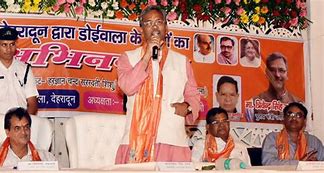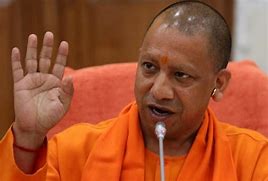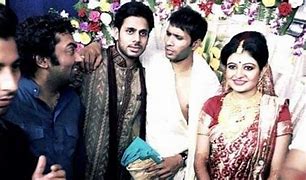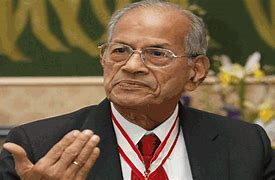Feature
Election outcome: Has ‘ghar wapsi’ hurt BJP?

While the Bharatiya Janata Party’s (BJP) failure to achieve “Mission 44 plus” in Jammu and Kashmir is understandable because of the party’s generally unfavourable image in the eyes of the Muslims, there are two aspects of the elections in Kashmir and Jharkhand which must be a cause of concern for the ruling party at the centre.
One is not so much its failure to win a single seat in the Muslim-dominated Kashmir Valley as the fact that the party secured a mere two percent of the votes there. What this confirms is the veracity of the earlier conjecture that the large turnouts in the valley were a sign of the determination of the voters to keep the BJP out. Evidently, they had no time for Prime Minister Narendra Modi’s development pitch.
A major reason why the people voted in such a single-minded manner against the BJP in the valley was not only their long-standing fears about the party’s communal mindset, but also the fact that these had been reinforced by the ‘ghar wapsi’ – euphemism for conversion – and ‘love jehad’ programmes of the saffron brotherhood in the last few months.
These two campaigns with their focus on making Muslims forsake their allegiance to Islam, and maligning them for allegedly luring Hindu girls into marriage with the purpose of converting them, must have spooked the Muslim voters in the valley. This apprehension perhaps also explains why the otherwise down-and-out Congress has fared much better than it may have expected.
Arguably, if the National Conference-Congress alliance had remained intact, the two parties would have won a larger number of seats although the anti-incumbency sentiments against them would have still made the People’s Democratic Party (PDP) emerge as the largest party in the 87-member state assembly.
Similarly, if the alliance between the Jharkhand Mukti Morcha (JMM) and the Congress had not ruptured in Jharkhand, the two together might have been able to make it even more difficult for the BJP to reach the half-way mark in the 81-member legislature. It can be stated, of course, that the Congress, in its present decrepit state, may have acted as a drag on Chief Minister Hemant Soren, whose JMM has shown remarkable resilience in partially defying the anti-incumbency factor and giving the BJP a run for its money.
Even if the BJP forms a government in Jharkhand, the outcome has shown that, as in Maharashtra, the people do not always dump the regional parties in favour of a national one probably because they feel a greater proximity towards them. As a result, the voters have shown that they have retained some of their loyalty for local players like the JMM in Jharkhand and the Shiv Sena in Maharashtra.
It is clear, therefore, that the Modi magic is not as overpowering as the BJP likes to believe. What is more, there is every reason to say that the saffron hotheads with their venomous communal outlook are primarily responsible for undermining the prime minister’s and his party’s position.
If they hadn’t not indulged in their sideshows and diverted attention from Modi’s focus on development, then there is no reason why the party could not have swept to power in Jharkhand – and earlier in Maharashtra – and come very close to fulfilling its “Mission 44 plus” agenda in Kashmir.
Given the fact that Jharkhand has never had a stable government since its formation, the BJP had an excellent opportunity to secure a comfortable majority if Modi’s reputation as someone with a firm control over the party had not been undercut by the outrageous and provocative statements by some BJP MPs like Sadhvi Niranjan Jyoti, Yogi Adityanath and Sakshi Maharaj.
While Jharkhand may rue the absence of stability yet again, the widening of the gulf between the Kashmir Valley and the Jammu region, with the BJP emerging a favourite of the Hindus in the latter and its opposite with the voters in the valley, is an unfortunate fallout of the outcome in Kashmir.
Now, the spotlight will turn to who will align with whom in the two states, especially on whether the PDP will go with the BJP or the Congress, the Sangh Parivar’s (loose fraternity of Hindu nationalist groupings) internal politics will also be in the limelight. Can the BJP allow the Rashtriya Swayamsevak Sangh (RSS) to egg on the Hindu extremists to make the most of a period in history when, after 800 years (as the VHP says), the Hindus are in power, or will it ask them to back off lest the party’s political gains are sacrificed at the altar of religious nationalism?
For the PDP, a tie-up with the BJP will be problematic because of the way the voters in the valley have turned their backs against the latter. A rejection of this nature points to the charge of polarization which is levelled against the BJP and draws attention to the ability of parties like the Congress and the National Conference to have their bases in both the regions.
The NC, of course, has fared poorly, presumably because Chief Minister Omar Abdullah rarely inspired the kind of confidence which his currently ailing father, Farooq Abdullah, did. The fact that the chief minister was “missing in inaction”, as is jocularly said, during the devastating floods is probably another reason why the NC has taken a bad hit.
Entertainment
Meghalaya Reserves Legalized Gambling and Sports Betting for Tourists

The State Scores Extra High on Gaming-Friendly Industry Index
Meghalaya scored 92.85 out of 100 possible points in a Gaming Industry Index and proved to be India’s most gaming-friendly state following its recent profound legislation changes over the field allowing land-based and online gaming, including games of chance, under a licensing regime.
The index by the UK India Business Council (UKIBC) uses a scale of 0 to 100 to measure the level of legalisation on gambling and betting achieved by a state based on the scores over a set of seven different games – lottery, horse racing, betting on sports, poker, rummy, casino and fantasy sports
Starting from February last year, Meghalaya became the third state in India’s northeast to legalise gambling and betting after Sikkim and Nagaland. After consultations with the UKIBC, the state proceeded with the adoption of the Meghalaya Regulation of Gaming Act, 2021 and the nullification of the Meghalaya Prevention of Gambling Act, 1970. Subsequently in December, the Meghalaya Regulation of Gaming Rules, 2021 were notified and came into force.
All for the Tourists
The move to legalise and license various forms of offline and online betting and gambling in Meghalaya is aimed at boosting tourism and creating jobs, and altogether raising taxation revenues for the northeastern state. At the same time, the opportunities to bet and gamble legally will be reserved only for tourists and visitors.
“We came out with a Gaming Act and subsequently framed the Regulation of Gaming Rules, 2021. The government will accordingly issue licenses to operate games of skill and chance, both online and offline,” said James P. K. Sangma, Meghalaya State Law and Taxation Minister speaking in the capital city of Shillong. “But the legalized gambling and gaming will only be for tourists and not residents of Meghalaya,” he continued.
To be allowed to play, tourists and people visiting the state for work or business purposes will have to prove their non-resident status by presenting appropriate documents, in a process similar to a bank KYC (Know Your Customer) procedure.
Meghalaya Reaches Out to a Vast Market
With 140 millions of people in India estimated to bet regularly on sports, and a total of 370 million desi bettors around prominent sporting events, as per data from one of the latest reports by Esse N Videri, Meghalaya is set to reach out and take a piece of a vast market.
Estimates on the financial value of India’s sports betting market, combined across all types of offline channels and online sports and cricket predictions and betting platforms, speak about amounts between $130 and $150 billion (roughly between ₹9.7 and ₹11.5 lakh crore).
Andhra Pradesh, Telangana and Delhi are shown to deliver the highest number of bettors and Meghalaya can count on substantial tourists flow from their betting circles. The sports betting communities of Karnataka, Maharashtra, Uttar Pradesh and Haryana are also not to be underestimated.
Among the sports, cricket is most popular, registering 68 percent of the total bet count analyzed by Esse N Videri. Football takes second position with 11 percent of the bets, followed by betting on FIFA at 7 percent and on eCricket at 5 percent. The last position in the Top 5 of popular sports for betting in India is taken by tennis with 3 percent of the bet count.
Local Citizens will Still have Their Teer Betting
Meghalaya residents will still be permitted to participate in teer betting over arrow-shooting results. Teer is a traditional method of gambling, somewhat similar to a lottery draw, and held under the rules of the Meghalaya Regulation of the Game of Arrow Shooting and the Sale of Teer Tickets Act, 2018.
Teer includes bettors wagering on the number of arrows that reach the target which is placed about 50 meters away from a team of 20 archers positioned in a semicircle.
The archers shoot volleys of arrows at the target for ten minutes, and players place their bets choosing a number between 0 and 99 trying to guess the last two digits of the number of arrows that successfully pierce the target.
If, for example, the number of hits is 256, anyone who has bet on 56 wins an amount eight times bigger than their wager.























